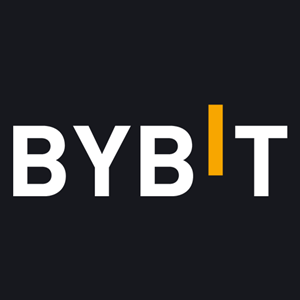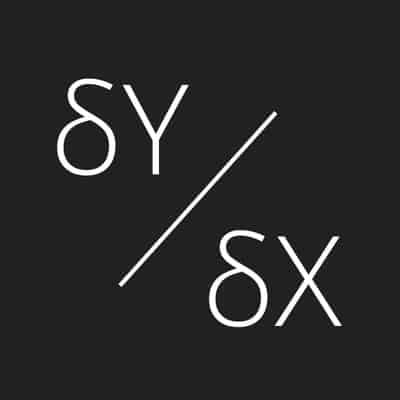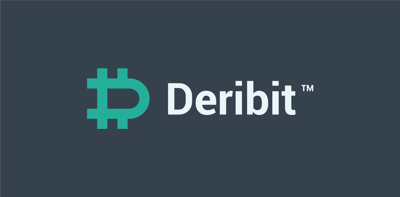Using Perpetual Futures and Funding Rates to Gauge Market Sentiment October, 2025
Crypto sentiment isn’t just vibes, it’s measurable. This guide shows you how to read funding rates, open interest, and trader positioning to catch real signals in real-time.
 Written by Nikolas Sargeant
Written by Nikolas Sargeant
| Fees | Deposit Methods | |||||||||
|---|---|---|---|---|---|---|---|---|---|---|
| Name | Cryptos | Taker | Maker | Withdrawal | Wire | Credit | Trading API | Active Since | Offer | |

Bybit
Contract Trading Exchanges
|
188 | 0.06% | 0.01% | 0.0005 | 2018 |
GET UP TO $600 IN REWARDS
|
Visit | |||

Binance
Centralized Exchanges
|
433 | 0.10% | 0.10% | 0.0002 | 2017 |
GET UP TO USD 100 WELCOME BONUS
|
Visit | |||

OKX Exchange
Centralized Exchanges
|
368 | 0.35% | 0.20% | 0.0005 | 2013 |
UP TO USD 60,000 IN BONUS!
|
Visit | |||

dYdX
Contract Trading Exchanges
|
4 | 0.05% | 0.02% | 0.000079 | 2019 |
|
||||

Deribit
Contract Trading Exchanges
|
3 | 0.05% | 0.00% | 0.000079 | 2016 |
GET 10% OFF TRADING FEES FIRST 6 MONTHS
|
||||
In crypto, market sentiment can be the difference between catching a breakout and getting caught in a fakeout. It’s the collective psychology of traders — the fear and greed that drives buying, selling, and risk-taking across exchanges. And because the crypto market trades 24/7 and thrives on speculation, sentiment swings happen fast.
Understanding this sentiment is essential if you're trying to stay ahead of trends, spot reversals, or avoid crowded positions. While some traders use social media chatter or news headlines to read the mood, more experienced participants rely on real-time market mechanics — specifically, perpetual futures and funding rates — to get inside the minds of the crowd.
Why these tools? Because they show what traders are doing, not just what they’re saying. When thousands of traders are opening leveraged long positions and funding rates spike, you can bet that bullish sentiment is running hot — maybe too hot. On the flip side, deeply negative funding during a price dip can signal panic… or opportunity.

This guide breaks down how to use these metrics to assess crypto market sentiment in a practical, data-driven way. Whether you're day trading or swing trading, knowing how to read the mood behind the charts can give you a serious edge. We’ll cover:
- What perpetual futures are and how they work
- How funding rates reveal bullish or bearish bias
- What to watch for in open interest and long/short ratios
- Real-world examples of sentiment shifts before major moves
Let’s start by unpacking perpetual futures — one of the most traded and misunderstood products in crypto.
What are perpetual futures?
Perpetual futures — or "perps" — are one of the most popular crypto derivatives. They allow traders to speculate on the price of a cryptocurrency without owning the asset, and unlike traditional futures, they don’t expire.
This lack of expiration makes them incredibly flexible for short-term and long-term speculation. You can open a position today and hold it for hours, days, or months — as long as you manage margin requirements.
How they work
A perpetual contract is tied to the price of a specific asset (e.g. BTC or ETH), but it’s not settled daily like traditional futures. Instead, a funding mechanism helps keep the contract’s price aligned with the spot market. More on that in the next section.

Perpetuals allow for leverage, meaning you can open a $10,000 position with just $1,000 or less. This multiplies both gains and losses — and is one reason perps are a favorite tool for short-term traders and high-volatility plays.
To manage price tracking, perps rely on two key reference points:
- Mark price: The fair value used to avoid liquidation manipulation.
- Index price: A blended spot price from major exchanges.
These help ensure trades aren't liquidated due to sudden short-term price manipulation.
Example
Let’s say BTC is trading at $30,000. On a platform like Bybit or Binance Futures, you open a 10x long BTC-PERP position with $1,000 in collateral. That gives you exposure to $10,000 worth of BTC. If BTC goes up 5%, your position gains ~50% (minus fees). If it drops 5%, you’re down 50% — and if it drops 10%, your position may be liquidated.
Major exchanges that offer perps
- Binance Futures
- Bybit
- OKX
- Deribit (popular for ETH and options traders)
- dYdX (decentralized)
Because perps dominate trading volumes (especially in BTC and ETH), they’ve become a live battlefield for sentiment. But to understand what the market is really thinking, you need to look at how traders behave inside these contracts — which brings us to funding rates.
Understanding funding rates
Funding rates are the hidden heartbeat of perpetual futures. They’re subtle, often overlooked, but incredibly powerful if you know how to read them. At their core, funding rates are designed to keep the price of perpetual futures in line with the spot market — and in doing so, they reveal which side of the market is more aggressive.

What is the funding rate?
Since perpetual futures have no expiry, there's no natural mechanism forcing their price to converge with spot — unlike traditional futures contracts. So, exchanges introduced a periodic funding payment between traders to keep the two prices closely aligned.
Every 8 hours (on most platforms), traders either pay or receive a funding fee, depending on whether the funding rate is positive or negative.
- Positive funding: Longs pay shorts. This happens when the perp price is higher than spot — suggesting more demand for long positions.
- Negative funding: Shorts pay longs. This happens when the perp price is below spot — meaning more traders are shorting.
The rate itself is a % value that changes in real time based on market imbalance.
Why it matters
Funding rates reflect crowd positioning. If the funding rate is high and positive, it usually means most traders are overly bullish and taking leveraged long positions. If it’s deeply negative, it means fear is dominant, and traders are heavily shorting.
This makes funding rates one of the most effective real-time sentiment indicators in crypto — straight from the derivative battlefield.
Example
Let’s say:
- BTC spot price = $30,000
- BTC perpetual = $30,300
- Funding rate = +0.05% every 8 hours
In this case, long traders are paying 0.05% of their position size to short traders, every 8 hours. Why? Because longs are pushing the price above spot — the market is biased toward bullishness.
But here's the twist: extreme funding often signals exhaustion. If funding spikes too high, it means too many traders are on the same side of the trade — and that usually ends in a squeeze.
Where to find funding data
Most major exchanges publish live and historical funding rates:
- Binance: Funding history
- Bybit: Under “Derivatives > Funding”
- Coinglass: Aggregates funding rates across multiple platforms
- CryptoQuant: Tracks funding with sentiment dashboards

Interpreting funding rates as sentiment indicators
If perpetual futures are the battleground, funding rates are the mood of the army. They don’t just tell you which side is winning — they hint at how overextended or panicked that side might be.
This is where funding rates become a trader’s sentiment compass.
1. Funding rate = crowd bias
At a glance:
- Positive funding = bullish bias (more long demand).
- Negative funding = bearish bias (more short demand).
But what really matters is how extreme the rate becomes — and how price reacts to that crowding.
Mild funding (±0.01%–0.03%)
This is normal. It suggests a balanced or slightly leaning market. No strong sentiment edge.
Elevated positive funding (0.05%+ or more)
Now we’re entering crowded long territory. Bulls are paying hefty interest just to stay in the trade. This often precedes:
- Liquidation cascades if price drops
- Reversals or “long squeezes”
Deeply negative funding (–0.05% or lower)
Traders are piling into shorts and paying to bet against the market. This often signals:
- Panic or capitulation
- Potential for short squeezes if price rebounds

2. Funding + price = high-signal combo
The most powerful insights come when you combine funding rate movement with price action.
Case A: Price rises + funding spikes
This is often FOMO-fueled bullishness. If the rise is steady and backed by volume, it may continue — but if funding gets overheated, expect a flush.
➡ Signal: Caution — potential local top.
Case B: Price drops + funding flips negative
This usually means the crowd is panicking. If the drop was sharp and funding goes deeply negative, it may be an oversold opportunity.
➡ Signal: Contrarian long setup — watch for bounces.
Case C: Price sideways + rising funding
This shows longs are aggressively buying dips — but price isn’t moving. If this continues, it could mean longs are getting trapped.
➡ Signal: Fake-out risk — possible breakdown.
3. Real-world example
March 2023: ETH dips to $1,400, funding flips deeply negative across major exchanges.
While spot buying was quiet, short positions exploded. A few hours later, ETH bounced back over 10% in two days — a classic short squeeze.
Traders who tracked the funding sentiment saw the panic forming and positioned themselves accordingly.

4. When no signal is the signal
Sometimes, funding stays flat or neutral even during big price moves. That often means the move is spot-driven, not leverage-driven — and could be more sustainable.
➡ Insight: Low funding + rising price = organic strength
➡ Insight: High funding + flat price = fragility
5. Visualizing it
Use Coinglass or CryptoQuant to overlay funding rates with price charts. Look for:
- Spikes just before price reversals
- Sudden flips in funding that contradict trend
- Flat price vs. climbing funding = warning
In short, funding rates aren’t just background noise. They are a real-time mirror of trader psychology. When paired with price, they become a high-signal sentiment tool that can warn you of traps, flushes, and fake-outs before they happen.
Long/short ratios and open interest
So far, we’ve looked at funding rates as a way to read the crowd’s mood — but to sharpen your sentiment read, you need more than just the cost of leverage. That’s where long/short ratios and open interest (OI) come in.
When combined with funding data, these two metrics offer a clearer picture of who’s positioned where, and how strongly.

Long/short ratio: Who’s betting on what?
The long/short ratio shows the percentage of open positions that are long versus short.
For example:
- 60/40 long/short ratio = 60% of traders are long, 40% are short.
- A high ratio (>70% long) means bullish bias.
- A low ratio (<30% long) means bearish bias.
But don’t take these numbers at face value. A heavily skewed ratio might signal crowd consensus — and as any trader knows, when too many people are on the same side, the market tends to do the opposite.
🔍 Sentiment takeaway:
- Extreme long bias + rising price = late-stage euphoria. Caution.
- Extreme short bias + dropping price = potential fear-based capitulation. Watch for reversals.
Open interest: How committed is the market?
Open interest (OI) is the total value or number of active contracts that haven’t been settled. Rising OI means money is flowing into the market — more traders are opening positions.
Falling OI means positions are being closed — either through profit-taking or liquidation.
How to interpret OI:
|
Price |
OI |
Interpretation |
|
Up |
Up |
Fresh longs entering — bullish strength or FOMO |
|
Up |
Down |
Shorts closing — short squeeze |
|
Down |
Up |
Shorts piling in — bearish pressure |
|
Down |
Down |
Longs closing — fear or stop-outs |
But here’s the kicker: OI + funding + price together tell the full story.
Example combo:
Let’s say:
- Price is rising
- OI is rising
- Funding is spiking positive
- Long/short ratio is 75% long
That’s a market where everyone is long, leveraged, and confident — possibly too confident. If price stalls, it’s at risk of a flush or long liquidation cascade.
Tools to track OI and long/short ratios:
- Coinglass: Visualize OI + funding + long/short ratios by exchange and token.
- CryptoQuant: Offers OI and market positioning dashboards.
- Binance Futures Metrics: See trader positioning and recent liquidations.
These metrics help you separate price action driven by real conviction from fakes driven by frothy leverage.

Using these tools in practice
Understanding funding rates, open interest, and long/short ratios is one thing. But using them in your daily trading routine — that’s where the real edge comes in.
Let’s walk through how to turn this data into actionable insights.
Step 1: Build a daily pre-trade checklist
Before entering any trade, ask:
-
What’s the funding rate doing?
-
Is it positive, negative, or neutral?
-
Is it spiking in either direction?
-
Where’s open interest headed?
-
Rising OI + rising price = bullish momentum.
-
Rising OI + flat price = potential trap.
-
Falling OI = positions being closed — often ahead of volatility.
-
What’s the long/short ratio?
-
Are traders heavily skewed one way?
-
Are you joining the crowd or fading it?
-
How does this align with price action?
-
Is the market pushing against the majority?
-
Is price diverging from sentiment?
-
What’s your edge in this setup?
-
If everyone is long, are you really early to the trend — or late?
Step 2: Spot contrarian setups
Some of the best trades happen when market sentiment is extreme — and starting to reverse. These are your “fade the crowd” opportunities.

Example A: Overcrowded long setup
- BTC price: $30,500
- Funding rate: +0.12% (high)
- Long/short ratio: 78% long
- OI: rising
➡ Interpretation: Market is euphoric and overleveraged.
If price stalls or dips slightly, a long squeeze could be triggered — causing a sudden sharp drop as leveraged longs get liquidated.
Play: Short scalp with tight stop above resistance. High reward if squeeze plays out.
Example B: Panic short setup
- ETH price: $1,650
- Funding rate: –0.08% (deeply negative)
- Long/short ratio: 28% long
- OI: climbing
➡ Interpretation: Traders are piling into shorts aggressively, possibly near the bottom.
If price stabilizes and funding starts flipping neutral, it could signal a short squeeze brewing.
Play: Scalp long or hedge long exposure. Tight invalidation if price breaks lower.
Step 3: Combine with technical analysis (TA)
Sentiment metrics aren’t standalone signals — they’re context. Use them to confirm or question your technical setups.
- If a breakout lines up with neutral funding and climbing OI → conviction.
- If a breakout happens with overheated funding and 80% longs → potential trap.
Sentiment adds depth to your TA — especially in high-leverage environments.

Step 4: Set alerts for extreme levels
You don’t need to watch charts 24/7. Use tools like Coinglass or CryptoQuant to set alerts for:
- Funding rates above +0.10% or below –0.05%
- Sudden spikes in open interest
- Shifts in long/short ratios by more than 10%
That way, you’re only reacting when the market becomes emotionally charged — and therefore, full of opportunity.
In practice, these tools help you do three things:
- Avoid crowded trades
- Spot market inefficiencies
- Time entries with better conviction
Advanced insights: Cross-exchange sentiment divergences
Not all exchanges are created equal — and neither is the sentiment they represent. That’s why one of the most overlooked sentiment signals is the divergence between funding rates and positioning across different exchanges.
This matters because:
- Retail-heavy platforms (like Bybit or Binance) often reflect hype, emotion, and high-leverage trades.
- Institutional platforms (like Deribit or CME) tend to move with larger, slower capital and more strategic positioning.
When these platforms disagree — that’s your edge.

1. Funding rate divergence
Let’s say:
- Bybit funding is +0.10% (extremely bullish)
- Deribit funding is flat or negative
This signals that retail traders are chasing longs, while institutions are neutral or even bearish. Often, the “smarter money” wins, and the price will correct downward.
➡ Use case: Enter a contrarian short when retail funding overheats but pro exchanges stay cool.
2. Spot-futures basis divergence
Sometimes, spot prices will lag behind or lead futures across exchanges.
- If perp contracts are trading well above spot, that’s a sign of aggressive long speculation.
- If spot prices are higher than perps, especially on high-volume exchanges, it may indicate organic demand (bullish).
This spot-futures basis can act as a forward-looking indicator of which side is more “real.”
➡ Tip: Watch for Binance spot vs. Binance Futures discrepancies on high timeframes.
3. Watch volume and liquidation trends by platform
Tools like Coinglass let you compare:
- Open interest
- Liquidation heatmaps
- Long/short ratios
...across multiple exchanges. A sudden spike in OI on Bybit but not Binance? That’s a clue.
By tracking cross-exchange sentiment, you can see where the real pressure is building, and which side of the trade is likely overcrowded. This gives you a strategic edge — especially in volatile, breakout-prone markets.

Limitations and common pitfalls
While perpetual futures data can offer a clear window into market sentiment, it’s important to understand the limits of these tools — and how traders often misread them.
1. Funding rate ≠ guaranteed reversal
Just because funding is high or low doesn’t mean a reversal is imminent. Markets can stay irrational longer than expected — with elevated funding persisting during strong uptrends or downtrends. Use funding as a context clue, not a standalone trade signal.
2. Short-term spikes can be misleading
Funding rates and long/short ratios can spike due to temporary position imbalances, especially during news events or large liquidations. One short-lived reading doesn’t always mean the whole market is leaning one way. Always zoom out.
3. Data may vary by exchange
Not all exchanges calculate or publish data the same way. Some adjust funding more frequently, and long/short ratios may be based on user count, not position size. Know your data sources.
4. Over-reliance = overtrading
These tools are meant to enhance your decision-making — not replace it. Pair sentiment data with technical analysis, price structure, and macro context to avoid being whipsawed by noise.
Final takeaways + action steps
Reading crypto market sentiment doesn’t have to be guesswork. By combining funding rates, long/short ratios, open interest, and cross-exchange data, you get a real-time look into what the market is thinking — and how dangerously positioned it might be.

These tools are especially powerful in crypto because of the market’s high leverage, 24/7 volatility, and retail dominance. Whether you’re scalping intraday moves or planning swing trades, understanding sentiment gives you the ability to:
- Avoid crowded trades before they unwind
- Identify early-stage reversals driven by emotional extremes
- Confirm or challenge your technical setups with live data
- React smarter when the market turns irrational
Remember: Action checklist!
- 📊 Monitor funding before every trade — spikes are red flags.
- 🔍 Track long/short ratios + open interest — watch for divergences.
- ⚖️ Compare exchanges — retail vs. pro sentiment often differs.
- 🧠 Stay contrarian when the crowd leans too hard one way.
- 🚨 Set alerts for extreme sentiment swings to avoid chasing tops/bottoms.
| Fees | Deposit Methods | |||||||||
|---|---|---|---|---|---|---|---|---|---|---|
| Name | Cryptos | Taker | Maker | Withdrawal | Wire | Credit | Trading API | Active Since | Offer | |

Bybit
Contract Trading Exchanges
|
188 | 0.06% | 0.01% | 0.0005 | 2018 |
GET UP TO $600 IN REWARDS
|
Visit | |||

Binance
Centralized Exchanges
|
433 | 0.10% | 0.10% | 0.0002 | 2017 |
GET UP TO USD 100 WELCOME BONUS
|
Visit | |||

OKX Exchange
Centralized Exchanges
|
368 | 0.35% | 0.20% | 0.0005 | 2013 |
UP TO USD 60,000 IN BONUS!
|
Visit | |||

dYdX
Contract Trading Exchanges
|
4 | 0.05% | 0.02% | 0.000079 | 2019 |
|
||||

Deribit
Contract Trading Exchanges
|
3 | 0.05% | 0.00% | 0.000079 | 2016 |
GET 10% OFF TRADING FEES FIRST 6 MONTHS
|
||||
